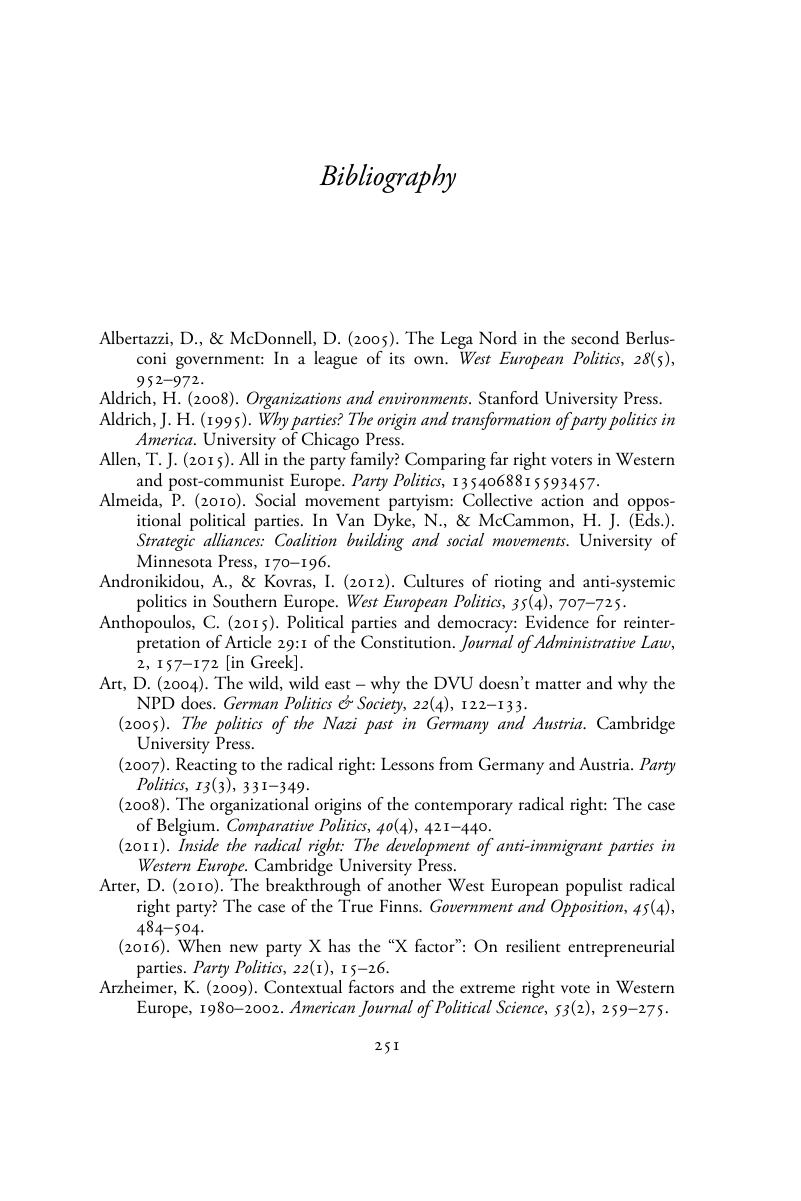 Organizing Against Democracy
Organizing Against Democracy Book contents
- Organizing Against Democracy
- Organizing Against Democracy
- Copyright page
- Dedication
- Contents
- Figures
- Tables
- Preface and Acknowledgments
- Chapter 1 Introduction
- Chapter 2 Extremist Right-Wing Parties in Europe
- Chapter 3 The Organizational Development of Extremist Right-Wing Parties
- Chapter 4 The Organizational Development of the Golden Dawn
- Chapter 5 Variation in Local Organizational Development
- Chapter 6 Endogenous Drivers of Local Organizational Development
- Chapter 7 Electoral Drivers of Local Organizational Development
- Chapter 8 The State and Local Organizational Development
- Chapter 9 Societal Responses and Local Organizational Development
- Chapter 10 The Local Development of Extremist Right-Wing Parties in Germany and Slovakia
- Chapter 11 Conclusions
- Bibliography
- Index
- References
Bibliography
Published online by Cambridge University Press: 18 January 2020
- Organizing Against Democracy
- Organizing Against Democracy
- Copyright page
- Dedication
- Contents
- Figures
- Tables
- Preface and Acknowledgments
- Chapter 1 Introduction
- Chapter 2 Extremist Right-Wing Parties in Europe
- Chapter 3 The Organizational Development of Extremist Right-Wing Parties
- Chapter 4 The Organizational Development of the Golden Dawn
- Chapter 5 Variation in Local Organizational Development
- Chapter 6 Endogenous Drivers of Local Organizational Development
- Chapter 7 Electoral Drivers of Local Organizational Development
- Chapter 8 The State and Local Organizational Development
- Chapter 9 Societal Responses and Local Organizational Development
- Chapter 10 The Local Development of Extremist Right-Wing Parties in Germany and Slovakia
- Chapter 11 Conclusions
- Bibliography
- Index
- References
Summary

- Type
- Chapter
- Information
- Organizing Against DemocracyThe Local Organizational Development of Far Right Parties in Greece and Europe, pp. 251 - 269Publisher: Cambridge University PressPrint publication year: 2020


